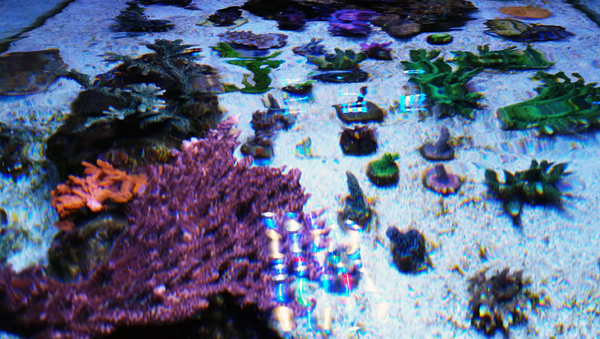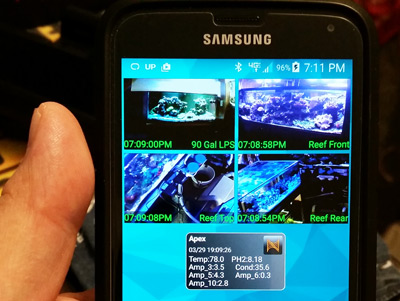There comes a time in every reef fanatic’s life where little things like work and vacation travel get in the way of enjoying the hobby. While being away for just a week, I have gone through everything from little disasters, such as algae blooms, to the horror of losing a whole system. Rather than accept problems as inevitable every time I travel, I’ve set out to automate as much of my system as possible.
Allow me to introduce myself!
I am by no means a professional aquarist, nor do I make my living in this industry, but as a professional systems engineer, I have applied many of my engineering practices to my reef aquarium, which in my mind feels like a multimillion-dollar system.
I have been in the saltwater aquarium hobby for over 25 years. I worked at a local pet store chain growing up and ran its first saltwater system when the base technology encompassed only undergravel filters, wet-dry systems, and air-driven skimmers with wooden air diffusers. Today, technology has advanced quite a bit with respect to filtering methods, lighting, and water chemistry.
These advancements have allowed me to try many different solutions through the years and to develop an automated system that enables me to mitigate losses while on the road for two to three weeks at a time. (Unfortunately, no one else in the household is willing to learn how to maintain my aquarium the way I do!) As we explore these solutions, however, keep in mind that automation is by no means a substitute for good husbandry.
Overview
In this series, I will walk you through the proper project-planning mindset and various areas that can be automated. The solutions can be popular, inexpensive DIY versions of commercially available packages. Essentially, this will be a presentation of my efforts through the years to fully automate my system in order to minimize losses.

The six “Ps” of reefkeeping automation
Success with any project, including the automation of a reef aquarium, requires a solid understanding of the following six “Ps”:
1. PRIOR
Before attempting anything, ask yourself whether this is truly something you are willing to commit time and money to for long-term success. How much are you willing and able to commit to this venture? Do you have the necessary knowledge? If not, have you done your research or identified resources that can help you? This step will save you time, money, and aggravation.
2. PROPER
While there are many possible ways to accomplish something, there’s almost always a best way. Identifying the proper tools and methods to address the design task will ultimately result in better results and the confidence that it was done correctly the first time.
3. PLANNING
What are your goals? Constraints? Resources? This is where you put your ideas on paper or computer. Do the research to get the best prices and understand how each piece of hardware supports your system and the livestock you have chosen. For example, if you are looking to keep a fish-only system, you don’t need high-end lighting. Species-specific or solely soft, LPS, or SPS systems are typically simpler than true mixed reefs since you can focus on the specific needs of those organisms versus trying to develop a system that can house everything.
Start out with the room your system will reside in. Does it have the proper access to power, and how much is needed? Will active ventilation be required? What is the desired look you want to achieve? Next, consider the aquarium system itself and how basic or automated you’d like it to be.
4. PREVENTION
Determine all the failure modes for the path chosen and understand how to avoid them in your planning. As Sanjay Joshi emphasizes, it’s all about “redundancy.” For example, it’s always better to have two half-powered heaters than one “just-right” heater. The same goes for backup sump pumps, overflows, drains, float switches, etc.
5. POOR
This “P” has two angles. First, avoid doing things poorly. Doing so may seem to save time and money, but it usually results in disappointing outcomes. Second, don’t spend too much at once or you’ll end up poor and full of regrets!
6. PERFORMANCE
Your level of long-term success will be determined by all the previous steps. Each time I travel, I experiment with my system to see what holes are left that need to be addressed. Always test your system or simulate it before going on a long trip. But I reiterate: Automation is by no means a substitute for good tank husbandry!
Summary
Now that we’ve adopted the attitude to do things correctly the first time, we can advance to areas where automation can be your best friend or backup reefer. These small investments will provide you with more time to enjoy your hobby and help your system flourish. In the next installment, we’ll discuss various functions, price options, choices, and the proper timing to enable them.
Read the other installments in this series:



